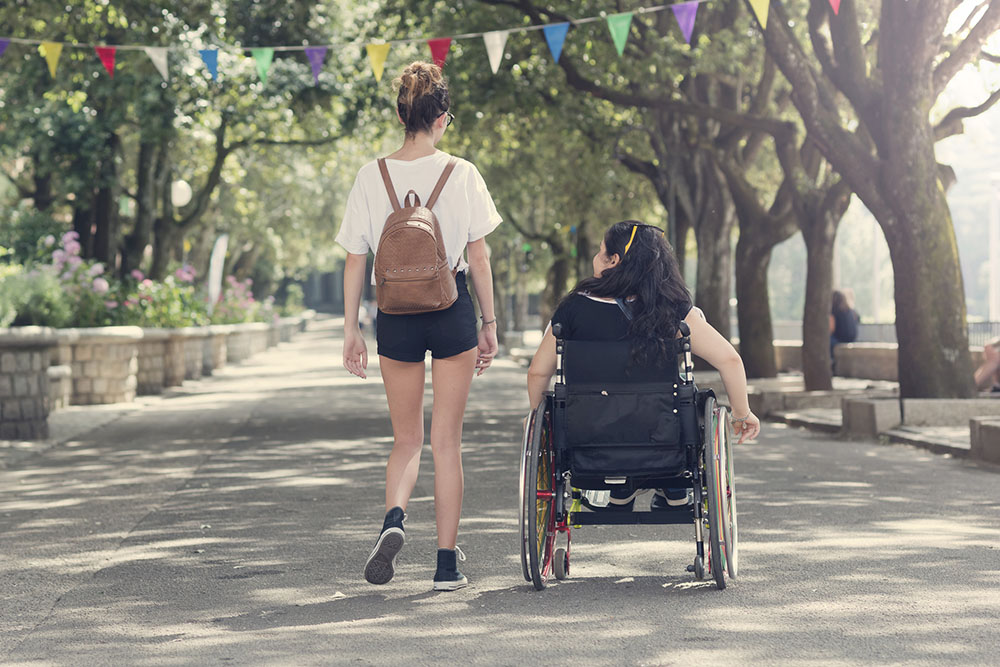Technology can be weaponised against women with cognitive or intellectual disabilities, with harassment, image-based abuse, monitoring and co-option of devices including the Internet of Things, a study for The eSafety Commissioner has found.
- A range of tech abuse reported, as well as abuse which targeted women's disabilities
- Significant challenges in addressing harm and help-seeking
- Training to support women and workers in practical use, safety and privacy needed.
- Women with intellectual or cognitive disability want to be empowered with digital devices and accessible and inclusive resources and responses
- Wider range of perpetrators of abuse included intimate partners, family, carers and strangers who contact or befriend into order to harm or exploit women with intellectual or cognitive disability
Released today, the For My Safety report, led by QUT Associate Professor Bridget and Dr Delanie Woodlock and sector partners WWILD, WESNET, SECASA (and assisted by Women with Disabilities Victoria) details the extra burdens and obstacles women with intellectual or cognitive disability face.
The study provides remedies suggested by the study participants - six women survivors, and 15 frontline workers and allied practitioners - to increase their safety online.
The women with intellectual or cognitive disability in the study reported that technology was important for them to manage their life and social connections but they wanted training in safe technology use and in healthy relationships as part of their independent living skills.
Professor Harris, from QUT School of Justice, said survivors spoke about the importance of a variety of digital devices and platforms to connect with family, intimate partners, and friends, for entertainment to manage banking, health and their home.

"The tactics used to abuse women with intellectual disability were similar to those used by partners or ex-partners on women without disability – harassment, surveillance, image-based sexual abuse, co-option of accounts and changing function of devices, coercion, intimidation and manipulation," Professor Harris said.
"One unique difference is that women's disabilities and resources are also targeted, so perpetrators might place tracking devices on wheelchairs, tamper with hearing aids or assistive technologies, threaten to disclose health information, and threaten to harm service animals.
"Also, the pool of perpetrators can be much broader for women with intellectual or cognitive disability. Abusers can be family members, carers and strangers as well as ex/partners.
"Frontline workers also reported that those who assist women may gain access to technologies under the guise of 'helping' them, and gain control of accounts and devices, leaving them open to exploitation."
Dr Woodlock said women with intellectual disability were at risk of technologically facilitated abuse for several reasons.
"Frontline workers said that women with intellectual or cognitive disability were at risk of being deliberately targeted online, with men befriending or having a relationship with them with intent or abuse or exploit them," Dr Woodlock said.
"This includes 'mate crime' and 'cuckooing', where a perpetrator moves into the home of someone they perceive as vulnerable and treats it as their own.
"A woman's partner can also be her carer. Frontline workers reported women in domestic violence situations are told if not for their partner, they would not have custody of their children.
"The women themselves said they feared not being believed if they reported abuse and/or that the digital device would be taken away from them and they would be cut off from friends, family and services.
"They face myths, misconceptions and assumptions about their capabilities and credibility when reporting abuse because perpetrators can exploit discriminatory attitudes about women with intellectual disabilities, such as them not being competent."

There are key opportunities to improve responses to tech abuse, Professor Harris said.
"Women had a raft of recommendations. They suggested plain English guides, demonstration videos and visual guides, and in-person instruction in using their devices including bringing technology safety experts into their support groups and sessions," she said.
"The eSafety Commissioner's work, material and training in this space is key; women and workers emphasised the need for resources and responses that are inclusive and accessible.
"Women also highlighted that social media and telecommunication agencies can and should be better at preventing and responding to tech abuse.
"And justice system responses to tech abuse and engagement with people with cognitive or intellectual disabilities can certainly be bolstered. Women and workers talked about a lack of knowledge and an unwillingness to address abuse."
Although the women said the risk of online abuse made them fearful and was stressful, many wanted to continue to use it but also be empowered through tech safety support and education.
"Women wanted to learn more and feel confident using their devices. They did not want other people to just turn off their settings but wanted to know how to use it themselves," Professor Harris said.






